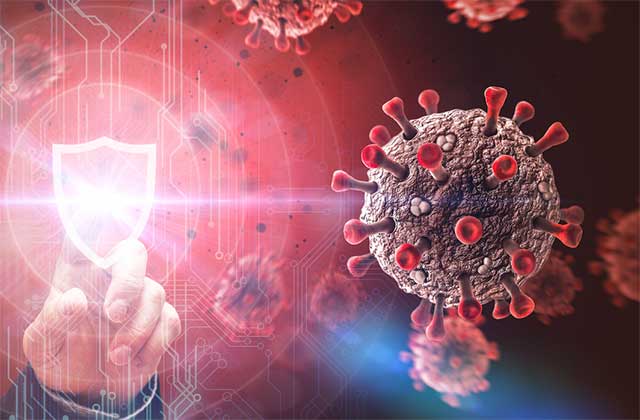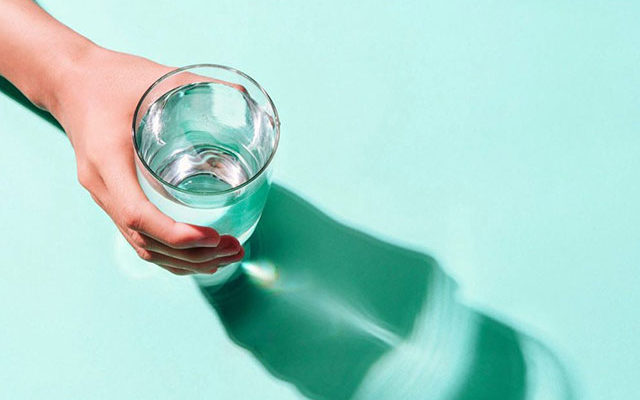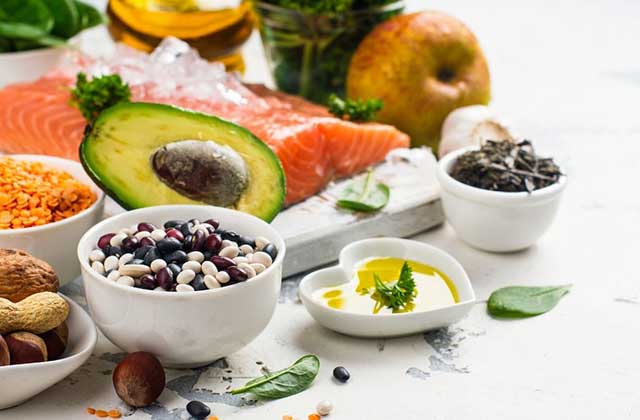Diabetes is a very serious chronic disease suffered by millions of people worldwide.
If you are diabetic and fail to control your blood glucose levels you are likely to end up with one or more serious medical conditions, such as heart disease, kidney failure and damaged nerves among many others.
Pre-diabetes is a condition in which your blood glucose levels are higher than they should be but not so high that you are diagnosed as diabetic. Research suggests that up to 70% of persons with pre-diabetes go on to develop full type 2 diabetes.
But this means that 30% manage to halt the development of diabetes before it becomes a chronic disease. So, if you have been diagnosed as pre-diabetic, developing full-blown diabetes is not inevitable.
You can’t change your past behaviour, your age or your genes but you can change your lifestyle… how you disport yourself and what you eat and drink.
How your digestive system works
The foods you eat are mostly a combination of carbohydrates, proteins and fats in various proportions. A piece of meat, for example, contains mostly protein and fats. Vegetables such as potatoes contain lots of carbohydrates.
When you digest a bit of food, it is broken down into it main components… carbs, proteins and fats. These components are then broken down further in your digestive system and released into to your blood-stream which delivers them around your body.
Your energy comes from glucose. Glucose is just a simple sugar. But it is your body’s primary source of energy.
Most glucose comes from digesting the sugar and starch in carbohydrates which you get from food such as rice, pasta, grains, breads, potatoes, fruits and some vegetables. The glucose produced by digestion in your stomach is absorbed into your bloodstream which delivers it to your body’s cells.
Glucose is the fuel for your cells… it powers your movements, thoughts and just about everything else you do.
In order to power your cells, glucose has to get into them. It can only do this with the help of insulin.
Insulin is a hormone (a type of chemical). It is produced by your pancreas. The pancreas releases insulin into your bloodstream where it travels around your body and meets up with glucose on the same trip. The purpose of insulin is to enable glucose to enter your cells.
To do this, insulin attaches itself to a receptor in the surface of the cell. This causes the cell membrane to allow glucose to enter the cell. The cell can then use the glucose as its fuel.
This glucose-insulin system has to work properly if you are to be healthy.
If the insulin does not do its job of ‘opening the cell door’ for glucose, the glucose will not be able to get into the cell… and the cell will run out of fuel.
Diabetes is a condition in which the glucose-insulin system does not function correctly.
There are two major types of diabetes: (a) type 1 and (b) type 2. More than 90% of diabetics have type 2 diabetes.
In type 1 diabetes the pancreas does not produce any insulin or, at best, very little. Type 1 cannot be cured. The only way these diabetics can survive is by taking regular shots of insulin.
In type 2 diabetes, the pancreas does produce insulin which is released into the bloodstream. But when the insulin arrives at a cell it has trouble attaching itself to a receptor. So it cannot induce the cell membrane to open and allow glucose to enter the cell.
Insulin resistance is the condition in which insulin is unable to attach itself to cell receptors.
Imagine a key trying to slide into a lock in a door. If the lock is jammed… say, with a bit of chewing gum… the key cannot get in. There is nothing wrong with the key and nothing wrong with the lock. But before the key can get in, the lock has to be cleaned out.
One of the main reasons for insulin resistance is having cell ‘doors’ that are jammed with fat. The only way to ‘unjam’ them is to eliminate all fat as far as possible from your diet for four to six weeks (at least) until the cell receptors are free of fat.
So what do you have to do to prevent type 2 diabetes developing from pre-diabetes to the full-blown chronic condition… with its elevated risks of heart attacks, strokes, blindness, kidney transplants, leg amputations, and other dreadful conditions?
Change your lifestyle using:
Here are 12 things you can do:
[1] Avoid sedentary behaviour
A sedentary lifestyle is one in which you sit most of the day and undertake little physical activity. The link between sedentary behaviour and the risk of diabetes is well proven.
An analysis of the results of 47 studies found that people who spent most of the day engaged in sedentary behaviour (eg, office workers) have a 91% risk of developing diabetes.
If you work in an office, there are several ways you can change your sedentary habits:
- Stand up from your desk and walk around for a few minutes every hour.
- Stand instead of sitting when talking on the phone.
- Take the stairs instead of the elevator.
- Park far away from the supermarket so you have to walk a good distance to get inside.
- Go for long walks in the evening (easy if you have a dog).
The best way to reverse sedentary tendencies is to commit to specific actions you can do every day.
[2] Get plenty of exercise
Research indicates that physical exercise increases the insulin sensitivity of cells… when you exercise, less insulin is required to enable your blood glucose to enter your cells.
Many types of physical activity reduce blood glucose levels in pre-diabetic adults who are obese or overweight… including aerobic exercise, strength training and high-intensity interval training.
One study of pre-diabetics indicated that high-intensity exercise increased insulin sensitivity by 85%… while moderately intense exercise increased it my more than 50%. But this effect only happened on the days that they actually worked out.
Another study found that to improve insulin response in pre-diabetics, they needed to burn at least 2,000 calories a week through exercise… but that is not too hard to do if you set your mind to it.
The trick is to find a physical activity you enjoy and can undertake regularly, and then stick to it for the long-term.
[3] Quit smoking
Besides cancers of the lung, breast, prostate, colon, oesophagus and digestive tract, as well as emphysema and heart disease, research indicates that there are strong links between smoking (and exposure to second-hand smoke) and type 2 diabetes.
Smoking increases the risk of diabetes by 44% in average smokers and 61% in heavy smokers (more than 20 cigarettes a day), compared to non-smokers according to a meta-analysis of several studies that together covered more than one million smokers.
But quitting reduces this risk over time, not immediately.
A study of middle-aged male smokers indicates that five years after quitting their risk of developing diabetes was reduced by 13% and after 20 years it was the same as people who had never smoked.
[4] Lose weight
The majority of people who develop type 2 diabetes are overweight or obese. In addition, people with pre-diabetes tend to have visceral fat … ie they carry their excess weight around their middle and abdominal organs such as the liver.
Studies have shown that excess visceral fat promotes insulin resistance, increasing the risk of diabetes significantly. This risk can be reduced by losing weight, especially around the middle.
One study of more than 1,000 people found that for every kilogram (2.2 lbs) they lost, their risk of diabetes was reduced by 16%. This study also found that the maximum reduction of risk was 96%, ie a loss of 6 kilogram (13.2 lbs).
There are many healthy ways for losing weight… exercise… dieting.
You have many dietary options to choose from: Mediterranean, paleo, low-carb, vegetarian. The best, perhaps, is the Beating-Diabetes diet.
[5] Reduce the fat in your diet
As you already know, the main cause of type 2 diabetes is fat gumming up the receptors in your muscle cells, so the insulin cannot open the cell membranes to allow glucose to enter. The “cure” is to unblock the receptors.
As you are pre-diabetic it is likely that fat is already beginning to gum up the receptors. You can unblock the receptors by minimising the fat you ingest in your diet.
To minimise the fat you eat:
- make sure that less than 10% of the energy in any food you eat comes from fat (read the labels), and
- reduce your consumption of meat, eggs and dairy products as much as possible, and focus on foods based on plants (fruit and vegetables).
It’s that simple.
[6] Reduce the refined carbs you eat
Refined carbohydrates are refined sugar and grain products that have been milled. The process removes dietary fibre, vitamins, and minerals from the grains.
Examples of refined carbs include white sugar, granulated sugar, high fructose corn syrup and so on, as well as white flour, white rice, white pasta etc. These are digested more rapidly than unrefined carbohydrates.
Many studies have shown a link between the frequent consumption of sugar or other refined carbs and the risk of diabetes.
For example, an analysis that looked at a total of 37 studies found that persons with the highest intakes of refined carbs are 40% more likely to develop diabetes than those with the lowest intakes.
This is because simple sugars and refined carbs are digested very quickly and are absorbed rapidly in the bloodstream. This results in a spike in the level of glucose in your blood.
But, as you are pre-diabetic, your body’s cells are resistant to the action of insulin. As a result the glucose spike stimulates your pancreas to produce more insulin.
Over time this leads to higher and higher blood glucose and insulin levels in your blood until you develop full-blown diabetes.
To avoid this you need to stop putting sugar in you tea and coffee, and stop drinking sodas and other sugary drinks.
You also need to start eating natural foods such as whole grains, legumes, fruits, and uncooked vegetables, all of which are top sources for unrefined carbohydrates.
[7] Eat a high fibre diet
Dietary fibre is the indigestible portion of plant foods. There are two types of fibre and eating plenty of both types is crucial for preventing pre-diabetes turning into the full-blown variety.
Soluble fibre is fibre that dissolves in water to form a viscous gel-like material that slows the rate at which food is absorbed, reducing the likelihood of sudden spikes in blood glucose.
Insoluble fibre cannot dissolve in water but does absorb water which makes your stool more bulky, easing its passage. It too is linked to reductions in blood glucose but how it works is not clear.
The main sources of soluble fibre are… legumes (beans, peas, etc)… grains (oats, rye and barley)… vegetables such as broccoli, carrot and artichokes… root vegetables such as sweet potatoes and onions… and the insides of some fruits such as prunes, plums, berries, bananas, apples and pears.
Insoluble fibre is mostly found in… whole grains… wheat and corn bran… nuts and seeds… potato skins… flax seeds… fruit such as avocados and bananas… some skins such as on tomatoes… and vegetables such as green beans, cauliflower, courgettes (zucchini) and celery.
Some plants contain significant amounts of both soluble and insoluble fibre. Eat plenty of vegetables and fruit and you will get enough fibre to prevent your pre-diabetes developing into diabetes.
[8] Minimise your intake of processed foods
Processed foods, such as bacon, sausage, paté, salami, breakfast cereals, cheese, tinned vegetables, bread, savoury snacks (crisps, sausage rolls, pies and pasties), cakes and biscuits, microwave meals and so on, are full of oils, added fats, added sugar, refined grains and all sorts of additives.
Processed foods are linked to all sorts of health problems, including diabetes. One study found that poor-quality diets that are high in processed foods increase the risk of diabetes by 30%.
So to prevent your diabetes developing into chronic diabetes, you need to cut back on processed foods. Eat vegetables, fruits, nuts and other plant foods instead.
[9] Restrict portion sizes
Once food hits your stomach, it all starts to be digested at once.
Thus, unsurprisingly, eating too much at one sitting has been shown to cause higher blood sugar and insulin levels in people who are pre-diabetic.
A two-year study of pre-diabetic men found that those who reduced the amount of food they ate in one meal had a 46% lower risk of developing diabetes compared to those who continued to eat large amounts.
Another study of people with re-diabetes concluded that those who practiced portion control lowered their blood glucose and insulin levels significantly after 12 weeks.
So, to prevent the onset of diabetes, you need to practice portion control.
[10] Drink lots of water, coffee and tea
Water… lots of it… should be your primary beverage.
Sticking with water most of the time means you will be avoiding beverages that are high in sugar, preservatives and other questionable ingredients.
A large observational study of 2,800 people found that those who consumed more than two servings of sugar-sweetened beverages a day had a 99% increased risk of developing LADA and a 20% higher risk of developing type 2 diabetes.
LADA, latent autoimmune diabetes of adults, is a form of type 1 diabetes that occurs in people over 18 years of age.
Some studies have found that increased water consumption (as oppose to upping the quantity of sodas or fruit juices you consume) leads to better blood glucose control and insulin response.
One 24-week study, for example, showed that overweight adults who replaced diet sodas with water as part of a weight-loss programme experienced a decrease in insulin resistance and lower levels of blood glucose and insulin after fasting.
So drink plenty of water, at least 2 to 4 litres, a day to stop diabetes developing.
Make sure you avoid the sugar-filled sodas and energy drinks. Instead, when you need a pick up or energy booster, go for coffee or tea.
Coffee and tea contain polyphenols, antioxidants that may protect against diabetes. Green tea also contains epigallocatechin gallate (EGCG), a unique antioxidant that has been shown to reduce the release of blood sugar from the liver and to increase insulin sensitivity.
Several studies have shown that drinking coffee on a daily basis reduces the risk of type 2 diabetes by anywhere from 8 to 54%. The greatest reduction in risk is seen in those who drink the most.
An analysis of several studies, that included tea as well as coffee, found similar results. This review also showed that the risk of developing diabetes was reduced the most in women (of all sizes) and overweight men.
So it’s plenty of water, tea and coffee for pre-diabetics who wish to avoid developing diabetes.
[11] Take a daily nutritional supplement
The term nutritional supplement covers micro-nutrients such as vitamins, dietary minerals and fatty acids.
Vitamins are vital for health. All vitamins fall into one of two main groups… water-soluble or fat-soluble.
Water-soluble … are all the B vitamins plus vitamin C. These vitamins are not stored in your body and you get rid of excess quantities in your urine. Thus they cannot build up to toxic levels in your body.
Fat-soluble … are vitamins A, D, E and K. To absorb these vitamins, you need a little fat in your diet. Any excess amounts are stored in your body fat so they could, theoretically, build up to toxic levels. But this is extremely rare.
Minerals are divided into two groups… major minerals and trace minerals.
Major minerals are the minerals you need in amounts of 100 milligrams (mg) or more each day. These minerals are calcium, phosphorus, magnesium, sulphur, potassium, sodium, and chloride.
Trace minerals are needed in amounts of less than 100mg each day. Trace minerals include iron, iodine, zinc, fluoride, selenium, copper, chromium, manganese, and molybdenum.
Minerals are used in a variety of processes. For example, your body uses calcium to make bones and teeth, and iron to make the haemoglobin in your red blood cells.
Although the functions of all vitamins and dietary minerals are not yet fully understood by scientists, and even though the results of clinical tests often contradict each other, a daily dietary supplement should help prevent your pre-diabetes developing into diabetes.
Here’s what you need to take on a daily basis:
- Multivitamin • to make sure all your nutritional needs are covered
- Vitamin B12 (4mcg) in a separate tablet • for the health of your nervous system as your pre-diabetes is likely to be affecting your nerves already
- Calcium (400mg) plus vitamin D (2.5mcg) together in a separate tablet • to ensure the health of your bones
- High-strength cod-liver oil capsule with vitamins D and E, in a separate capsule • to make sure you ingest adequate amounts of the essential fatty acids omega 3 and omega 6
There is an emphasis on vitamin D because this vitamin is important for good control over your blood glucose.
A variety of studies show that persons who have too little vitamin D in their bloodstream are at a greater risk of all type of diabetes. One study found that persons with the highest levels of vitamin D in their blood were 43% less likely to develop diabetes compared to persons with the lowest levels.
Most health organisations recommend maintaining a vitamin D blood level of at least 75nmol/l (30ng/ml).
Controlled studies have shown that when people who are deficient in vitamin D take supplements, their blood glucose levels normalise and their risk of developing diabetes is reduced significantly.
[12] Add natural herbs to your diet
The internet is full of claims, mostly spurious, that certain herbs can prevent your pre-diabetes from developing into the full-blown version of the disease. Here are a few of the more credible claims:
Cinnamon … is a highly-aromatic spice with a very distinctive flavour. It is used in traditional medicine to treat a variety of medical conditions, apparently with some success.
Reports on the internet suggest that cinnamon can cut fasting glucose levels by up to 30%, so I began sprinkling one large teaspoon on my porridge (oatmeal) in the morning. Within a few days, my average glucose levels on awaking had dropped by nearly 0.5mmol/l (9mg/l) or about 8%, quite a bit short of 30%… a significant reduction nonetheless.
So it seems to me that this spice, in the form of ground powder you can buy from your local supermarket, can help you improve your blood glucose levels and thus help prevent your pre-diabetes developing into diabetes.
Bitter melon… aka bitter gourd or karela (in India), is a unique vegetable-fruit that can be used as a food or medicine. It is often recommended for the control of diabetes.
A number of clinical studies have shown that bitter melon is effective in improving blood glucose levels, increasing the secretion of insulin and decreasing insulin resistance.
In January 2011, for example, the results of a four-week clinical trial were published in the Journal of Ethnopharmacology, which showed that a 2,000 mg daily dose of bitter melon significantly reduced blood glucose levels among patients with type 2 diabetes. However the hypoglycemic effect was less than that of a 1,000 mg per day dose of metformin, a popular diabetes medication.
Although it may be of some help in preventing your pre-diabetes getting worse, bitter melon needs to be treated with care as it has been associated with miscarriages and induced abortions in animals… it should be avoided if you are pregnant or want to get pregnant.
Curcumin … is a component of turmeric, one of the main ingredients in curries. It has strong anti-inflammatory properties and has been used in Ayurvedic medicine for centuries.
Research shows that curcumin can help reduce inflammatory markers in persons with pre-diabetes.
In a controlled 9-month study of 240 pre-diabetic adults, none of those who took 750mg of curcumin per day developed diabetes, but over 16% of the control group did. The study also noted that insulin sensitivity amongst those who took curcumin increased, as did the functioning of their insulin-producing cells in the pancreas.
Thus the benefits of curcumin in decreasing insulin resistance and reducing the risk that pre-diabetics will develop full blown diabetes appear to be well proven.
Berberine … is an alkaloid extracted from various plants used in traditional Chinese medicine. It is proven to have anti-inflammatory and anti-diabetic effects. It works by reducing the production of glucose in the liver and increasing insulin sensitivity.
An amalgamation of 14 studies of human and animal research has shown that 1,500mg of berberine, taken in three doses of 500mg each, is equally effective as taking 1,500mg of metformin or 4mg glibenclamide, two popular pharmaceuticals for treating type 2 diabetes. Berberine is one of the few supplements shown to be as effective as conventional diabetes drugs.
Berberine, however, can interact with other medications and caution needs to be exercised… ask your doctor before you try to use it to prevent your pre-diabetes getting worse.
Caveat (1): Spurious claims that certain supplements can cure or prevent diseases abound on the internet. However there are a few reliable sites that contain research-tested information. These are mainly connected to reputable universities, medical schools and teaching hospitals.
Caveat (2): Some herbs and supplements may interact with your diabetes medication (including insulin) and cause excessively low blood glucose. So check with your doctor before using them.
Conclusion
Pre-diabetes can develop into full-blown diabetes very quickly if you do nothing about it. And the medical consequences of diabetes are very serious indeed.
So take your pre-diabetes seriously and deal with it as outlined above… this will enable you to live a pleasant and fruitful life.









